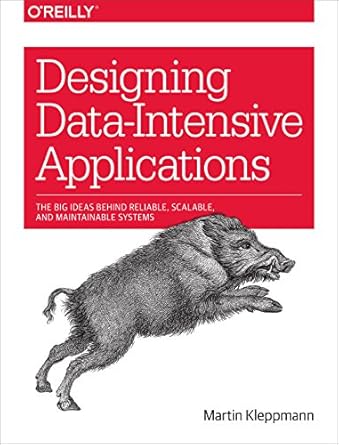Description
**Designing Data-Intensive Applications** is a book by Martin Kleppmann, which explores the design and architecture of systems that handle large amounts of data. It covers fundamental principles of data management, storage, and processing, with an emphasis on building scalable, reliable, and maintainable applications. The book focuses on the challenges and techniques involved in handling data-intensive applications in a distributed environment.
Here are some key concepts covered in the book:
### 1. **Data Models and Query Languages**
– **Relational Model vs. NoSQL**: The book compares different data models like the relational model (used in traditional SQL databases) and NoSQL databases, including document, key-value, columnar, and graph databases.
– **Data Integrity**: How to ensure data consistency, even in distributed systems, using techniques like ACID transactions (Atomicity, Consistency, Isolation, Durability) and BASE (Basically Available, Soft state, Eventual consistency).
### 2. **Storage and Retrieval**
– **Indexing and Query Optimization**: How indexes are used to improve query performance, along with concepts like B-trees, hash indexing, and secondary indexes.
– **Storage Engines**: Exploring how databases manage storage, including log-structured merge trees (LSM trees), and the trade-offs between different storage engines.
### 3. **Data Models for Scalability and Availability**
– **Sharding**: How to split data across multiple machines (horizontal scaling) and the challenges in doing so, such as managing distributed joins and balancing the load.
– **Replication**: Techniques for replicating data across multiple nodes to ensure high availability, fault tolerance, and data durability. It also covers the complexities involved in ensuring consistency in replicated systems.
### 4. **Consistency and Consensus**
– **CAP Theorem**: Understanding the trade-offs between Consistency, Availability, and Partition tolerance, and how to design systems to balance these factors based on the use case.
– **Eventual Consistency**: Techniques for achieving eventual consistency in distributed systems, often seen in NoSQL systems, and how they differ from traditional strongly consistent systems.
– **Distributed Consensus**: The challenges in reaching consensus in distributed systems, with algorithms like Paxos, Raft, and other protocols to ensure fault-tolerant distributed systems.
### 5. **Stream Processing and Batch Processing**
– **Stream Processing**: Handling real-time data streams, such as Kafka or AWS Kinesis, and stream processing frameworks like Apache Flink, and how they differ from batch processing systems.
– **Batch Processing**: The traditional approach to data processing (like MapReduce) and the evolution towards more scalable and performant systems (e.g., Apache Spark).
### 6. **Data Integration**
– **ETL (Extract, Transform, Load)**: Approaches for integrating data from different sources, transforming it into the required format, and loading it into a data warehouse or other systems.
– **Event-Driven Architecture**: How event-based systems work and the challenges of managing state transitions across distributed systems.
### 7. **Designing for Failure**
– **Fault Tolerance**: Designing systems that can recover from hardware and software failures, ensuring data consistency and availability even when parts of the system fail.
– **Resilience Engineering**: Techniques for building applications that are resilient under high load or failure, including retries, backoffs, and redundancy.
### 8. **Security and Privacy**
– **Data Encryption**: Protecting sensitive data through encryption techniques both at rest and in transit.
– **Access Control**: Implementing authorization and authentication mechanisms to ensure only authorized users can access sensitive data.
– **Compliance**: Ensuring that applications adhere to legal and regulatory standards, such as GDPR and HIPAA, when handling personal data.
### 9. **The Evolution of Data Systems**
– **Future Trends**: The book concludes with a look at emerging trends in data systems, such as machine learning, artificial intelligence, and data-driven applications. It discusses how these trends impact the design of data systems.
### 10. **Building Reliable Systems**
– **Design Patterns**: A variety of design patterns that help ensure the reliability and scalability of systems. These include event sourcing, CQRS (Command Query Responsibility Segregation), and microservices architectures.
– **Observability**: How to monitor, log, and trace systems to detect and resolve issues quickly.
—
The book is a comprehensive guide to designing applications that rely on massive amounts of data. It teaches how to choose the right tools, technologies, and patterns to meet specific needs in real-world data systems. The book emphasizes the trade-offs involved in design decisions, particularly when dealing with distributed systems, ensuring high availability, and balancing consistency.






































Reviews
There are no reviews yet.